Sushi and Sashimi are hot right now, but you still need to keep it at the right temperature
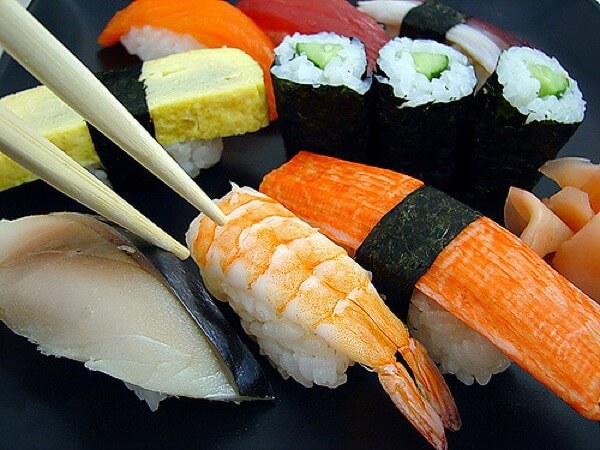
In 2012 the SMH reported we ate 115.6 million servings of sushi in Australia.
It's a big hit with 18 to 24-year-olds as they ate 21.4 million pieces of Sushi.
//www.smh.com.au/lifestyle/cuisine/bitesize-view-of-a-nation-20120316-1vbna.html
Roy Morgan Research found Between July 2009 and June 2014, Australian Sushi eaters grew from 36% to 40%.
52% 18-24 year-olds surveyed said they eat sushi regularly
I love sushi. I believe it's a quick, healthy snack. I have one daughter who loves sushi because it's wrapped in Nori, while the other can't stand it.
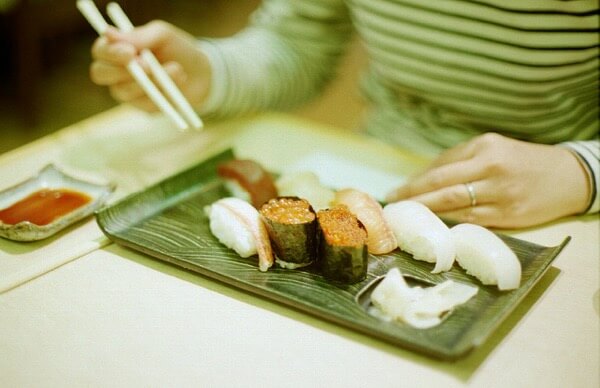
If you think Sushi’s the new kid on the block, think again. It started getting popular in Australia the 90’s when we had an influx of Japanese businesses set up corporte office over here.
A lot of Japanese Chefs & Sushi Makers took the opportunity move to Australia to meet the demand from the Japanese workers who came with the businesses.
Just as most other people from far away lands bring their culture & their food cuisine with them, the Japanese were no different.
We have a rich history adopting different foods Like Indian, Lebanese Asian, German & list goes on. Nowadays it would be difficult to find a restaurant only offering Meat & 3 Vegs.
We have lot more choices with a vast diversity of cuisines to choose from.
I can remember my friend telling me more than 25 years ago how he was going to try a new restaurant, where the food came around on conveyor belt, and you just eat what you want.
He loved the idea every time a dish went by he would grab a plate & give it a try. He couldn't believe his luck. It just keeps coming, so he just kept eating. By the end of the night he had eaten about 30 plates of Sushi, he was in for a big shock because he did not realise that you had to pay for every plate you ate. He managed to rack up a bill which would of feed a small army.
Now you think would this might of put a damper on eating Sushi. My friend still enjoys eating Sushi now just puts a limit on how many dishes he’ll get.
We still have a good laugh whenever we go out for Sushi, thinking of all those Sushi Plates just piling up in front of him.
So when we go out, we usually get 3 types of Sushi.
The 3 Main Types Of Sushis
Maki Sushi
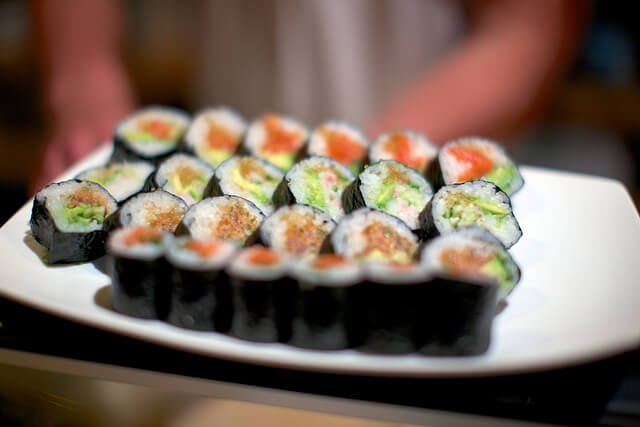
Maki-style sushi is the "roll" type of sushi.
Raw or cooked fish or shellfish, vegetables and vinegared rice are placed on a sheet of dried sea kelp (Nori) rolled into a cylinder then cut into pieces
Nigiri Sushi
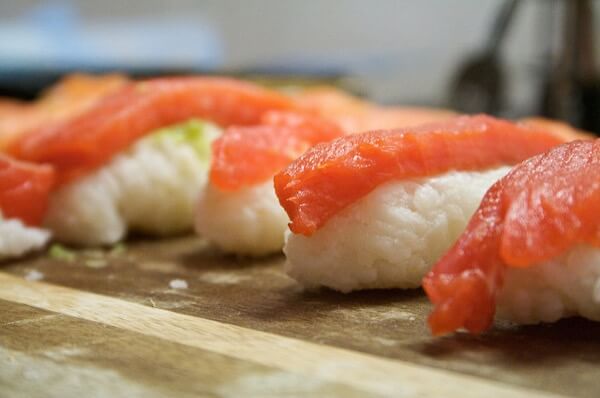
Alexander Baxevanis - Sushi close-up
A slice of raw or cooked fish or shellfish pressed onto a mound of vinegared rice, with a little wasabi.
This makes it easy to pick up and eat with your hands, which is why it's often called "hand sushi,"" Nigiri-style became popular in the early 19th century in Japan when street vendors were a big part of the food industry.
Sashimi
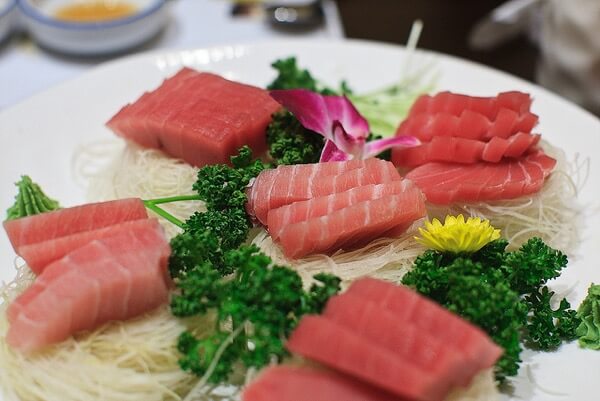
Ok I know Sashimi is not technically Sushi.
Sashimi consists of slices of sushi-grade fish and regular steamed, boiled or sushi rice on the side. The most common types of fish served in sashimi-style sushi in the United States are salmon and tuna.
When we, think of Sushi we usually think of Japan.
Sushi is often confused with raw fish and rice. This is correct if referring to the Edo style sushi, but originally, sushi was a term for fermented meat or fish, prepared for the sole purpose of preservation.
Sushi was first mentioned in China in the second century AD as a way of preserving food. They needed to keep fish & meat fresh because they had no refrigeration. Fish was placed in rice and allowed to ferment, so preserving the fish for several months. They threw the rice away and ate the preserved fish when they needed it.
By all accounts even though they could preserve the fish it had a major downside it stunk real bad.
Around about ten centuries later, the Japanese people started adding vinegar to their sushi to speed up the fermentation process. This was a big success because it dramatically reduced the pungent smell.
In the early 17th century, Matsumoto Yoshiichi of Edo (now Tokyo) starting seasoning the rice with rice wine vinegar while making his ‘sushi’ to sell.
This process allowed the dish to be eaten immediately, instead of having to wait for months of fermentation for the sushi to be preserved.
The Japanese had been eating sashimi or slices of raw fish for centuries. It was not until between 1827 and 1829 when sushi and raw fish (Sashimi) were first combined.
This became what is known as the Edo style sushi. This is the sushi widely found in most sushi restaurants today.
Sushi was the original Fast Food
Sushi was initially created as an inexpensive, fast food to cater for the busy streets of Edo, and proved to be a success from the beginning.
The vinegar rice resembling the naturally fermented sushi rice helped the sashimi from spoiling too quickly, and the fast preparation made it ideal for selling to people passing by.
So Sushi became the first fast food, The sushi was served from sushi stalls on the street as a snack or quick bite to eat on the go.
The Evolving Sushi
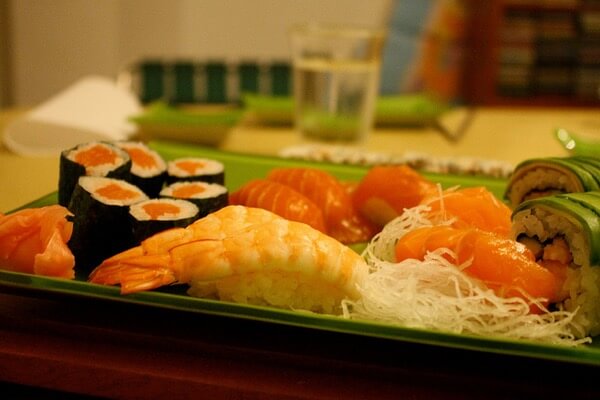
Sushi has continued to evolve from the traditional Japanese methods. Western influences have given rise to new styles of sushi, such as California rolls and many "fusion" creations.
You will find Sushi raw fish and soured rice. Sushi is now made using other ingredients like Tofu, Avocado, Prawns, Egg, Vegetables, and Seaweeds. The flavour combinations of Sushi are only limited by chef's imagination.
Sushi is often served with wasabi, soy sauce and pickled ginger. When eating, the wasabi is used to add a bit of spice, and the ginger is meant to be eaten between bites. If you choose to use soy sauce, you should only dip the portion of the nigiri that is fish, and not the rice.
Now some Sushi Experts claim, you should not mix wasabi and soy sauce together when eating sushi. I like injecting the soy into the rice, & dabbing Washi to give a nasal clearing kick. That’s what I'm talking about.
If you want, eat good Sushi look for a place where they make the Sushi fresh everyday.
Sushi and Sashimi are hot right now, but you still need to keep it at the right temperature.
Even though the Sushi has some fermented properties, it still needs to be refrigerated to keep it fresh. The Sushi needs to be kept at the right temperature to meet its HACCP requirements. To stop exposing your food to the risky Danger zones.
Hoshizaki HNC-120BE-R Sushi Cabinet 1200mm
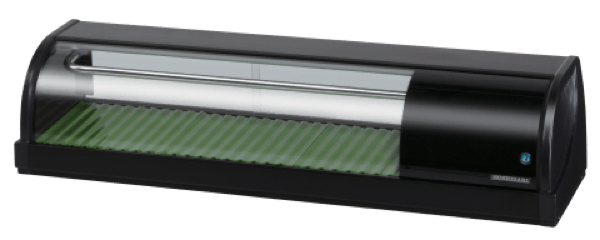
Hoshizaki design and manufacture stylish counter top displays specifically for sushi presentation and freshness. The rounded glass design and black exterior give the machine a contemporary, modern look.
The Hoshizaki Sushi Cabinet maintains a stable humidity and temperature levels at all times, instead of forced air circulation methods that dry out and ruin displayed sushi. So your Hoshizaki displayed sushi lasts longer and your Sushi at its absolute best quality.
Hoshizaki machines do not defrost and drop condensation onto your sushi displayed within them, protecting the integrity of the product at all times.
With up to 8 different configurations to choose from Hoshizaki, sushi cabinets are simply the superior choice for displaying your sushi.
What you get with a Hoshizaki Sushi Cabinet
- It's Easy to insatll...
- Plate space on top of unit, 140mm...
- Stable humidity and temperature levels are maintained instead of forced air circulation methods that dry out and ruin displayed sushi...
- Large diameter 25mm drains at front...
- Larger front to back interior 270mm...
- Interior floor has a radius at all four sides...
- Self-contained refrigeration unit - easy to install
- Left and right side compression location options available...
- Condenser airflow is in the back and out the side...
- Large diameter upper evaporator with tin plating...
- Larger condenser face area improves cooling performance...
- Solid base food plates with radius groove to fit sushi foods...
- Base food plates can be turned upside down and used to improve cooling performance...
- R-134A Refrigerant...
- Exterior consists of clear glass, ABS plastic, PVC plastic and stainless steel...
- Interior consists of clear glass, ABS plastic and stainless steel...
Hoshizaki HNC-120BE-R Sushi Cabinet 1200mm Product Specification
-
Exterior Dimensions
- Width: 1200mm
- Depth: 345mm
- Height: 270mm
-
Interior Dimensions
- Width: 845mm
- Depth: 288mm (floor)
- Height: 157mm
-
Weight
- Net: 32kg
- Packed: 44kg
-
AC Supply Voltage
- 220 - 240V / 50Hz
- 10Amps
-
Rated Amperage
- 1.1A
-
Satuartion temperature
- Approx 4°C (Ambient temp 27°C, no load)
-
Net Capacity
- 42 litres
-
Ambient temperature
- 10°C - 30°C
-
Refrigeration System
- Convection Cooling
Check out the Hoshizaki HNC-120BE-R Sushi CabinetHoshizaki HNC-120BE-R Sushi Cabinet
Skip all the hard work and get the right equipment Restaurant or Commercial Kitchen
If you would like to find out more about Restaurant Equipment for your food business then please choose from one of these options:

